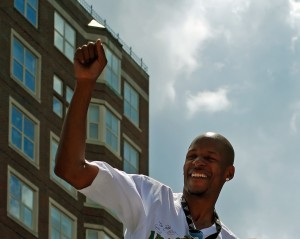Houston Rockets
Bargain-bin shopping: Where Rockets may fit with remaining free agents
Published
11 years agoon
By
Ben DuBose
Welcome to the annual NBA dead period.
The last free agent of significance to swap teams was Mo Williams, who joined Minnesota on a one-year, $3.75-million deal way back on July 28. Since then, the market has largely dried up as ring-chasing veterans appear to be taking their time in deciding if (and where) they’ll play.
The good news is that the market may soon pick up. Shawn Marion visited Cleveland on Monday and looks to have more visits on the near-term horizon. Ray Allen gave multiple interviews to reporters this week outlining his process and priorities in making a decision.
If the Rockets want to get involved with either, they have a compelling case. Besides offering a ready-made team with two superstars and visions of contending, they also have more money for spending than most other contenders. The Rockets have most of the non-taxpayer mid-level exception (MLE), which should amount to near $4.8 million after spending a small portion to lock up second-round pick Nick Johnson for three years.
They also have the biannual exception (BAE), which allows them to sign a players at a salary starting near $2.1 million for up to two years. That was what they appeared to offer to Kostas Papanikolaou last month, before backing away when the Greek forward asked for more money, which would’ve significantly cut into the team’s MLE.
So while the Rockets do have nearly all of both exceptions, there is a catch. The controversial decision to let Chandler Parsons walk to Dallas was made in large part due to a desire to maintain ample flexibility for the summer of 2015, which means the Rockets are unlikely to hand out a contract of more than one year (unless there’s a team option). That insistence on a one-year deal appeared to play a big role in Jameer Nelson‘s choice to head to Dallas on a two-year contract, despite recruiting pitches from Houston and former teammate Dwight Howard.
The Rockets could also choose to hold over a small portion of exception money for the regular season, potentially giving them a leg up on veterans who are bought out by losing clubs. However, even if that’s a consideration, there should still remain ample funds to use this summer. The team also has a $8.4 million traded-player exception (TPE) from the Jeremy Lin deal that could theoretically be used in a sign-and-trade, but there doesn’t seem to be a remaining free agent in that price tier and it appears GM Daryl Morey will likely hold onto the TPE for future trade proposals.
Here’s a look at where the club may stand with some of the marquee remaining free agents:
Ray Allen
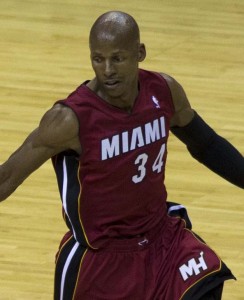 Why he fits: Despite leading the league in three-point attempts, the Rockets ranked only 15th in three-point accuracy. Other than newcomer Trevor Ariza, who shot a career-high 40.7% from behind the arc, no presumed Houston rotation player shot better than 36% from deep. Enter Allen, perhaps the most feared long-distance shooter in NBA history (40% career). He’s already used to playing a smaller bench role on a contender, and at 39 years old with four NBA Finals trips under his belt, he brings a level of championship experience that the current Rockets lack.
Why he fits: Despite leading the league in three-point attempts, the Rockets ranked only 15th in three-point accuracy. Other than newcomer Trevor Ariza, who shot a career-high 40.7% from behind the arc, no presumed Houston rotation player shot better than 36% from deep. Enter Allen, perhaps the most feared long-distance shooter in NBA history (40% career). He’s already used to playing a smaller bench role on a contender, and at 39 years old with four NBA Finals trips under his belt, he brings a level of championship experience that the current Rockets lack.
Why he may not: Well, he’s 39 and his game is clearly in some decline. He can still shoot well, but is it worth taking away minutes from the likes of Troy Daniels?
Verdict: This appears to be Houston’s primary target. We know from the Houston Chronicle‘s Jonathan Feigen that the Rockets and Allen have talked. We know from Allen’s interview earlier this week that he wants to play for a contender and is seeking more than a minimum contract. The only other contender to have comparable money to Houston is San Antonio, but the Spurs would have to boot Marco Belinelli from the rotation, and that seems unlikely. The bigger stumbling blocks would be the potential for Allen to retire and spend more time with his family, and whether he considers Kevin McHale the “great, veteran coach” he’s said to be looking for. If Allen decides to play in 2014-15, the Rockets would seem to have a real chance.
Shawn Marion
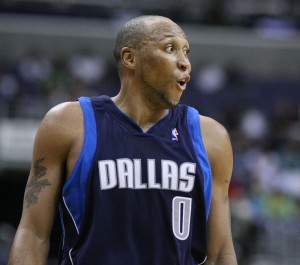 Why he fits: There’s only one remaining free agent who played at least 2,000 minutes for a playoff team last season. That’s Shawn Marion, who remained a full-time starter in Dallas until Parsons’ arrival pushed him out the door. At 36, he’s still a good defender at both small forward and power forward, rebounds relatively well and manages to score in double figures on offense without demanding the ball. The Rockets had depth issues last year, and Marion would seem to be a reliable candidate for at least average production. Marion lives in Dallas with a family and presumably would like to be close to home.
Why he fits: There’s only one remaining free agent who played at least 2,000 minutes for a playoff team last season. That’s Shawn Marion, who remained a full-time starter in Dallas until Parsons’ arrival pushed him out the door. At 36, he’s still a good defender at both small forward and power forward, rebounds relatively well and manages to score in double figures on offense without demanding the ball. The Rockets had depth issues last year, and Marion would seem to be a reliable candidate for at least average production. Marion lives in Dallas with a family and presumably would like to be close to home.
Why he may not: At this stage of his career, Marion is losing a step and still isn’t a good shooter from distance. That makes him more of a small-ball power forward than a small forward, especially in a system like the one in Houston that thrives on shooting and spacing the floor. And at the PF spot, the Rockets already have returning starter Terrence Jones, breakout candidate Jeff Adrien and high hopes for summer-league sensation Donatas Motiejunas. Marion could still play spot minutes at SF, of course, but the addition of Ariza should already go a long way toward shoring up last season’s defensive deficiencies.
Verdict: How long will Marion wait? Specifically, will he wait longer than Allen? That’s the real question. Marion’s market doesn’t appear to be strong at all. Last week, he told the Fort Worth Star-Telegram that he had had no contact with teams, and his free agency “tour” began this week with a visit to Cleveland, a team that can only offer him the league minimum. There haven’t been any reported leaks of dialogue between Marion and the Rockets, which makes it appear that the Rockets have other priorities. Marion could be a fit if the Rockets miss on other targets, but it would depend on how long he’s willing to let the process drag out. His plan this week to schedule visits could indicate that he’s getting a bit antsy, which may not bode well for Marion in Houston.
Ramon Sessions
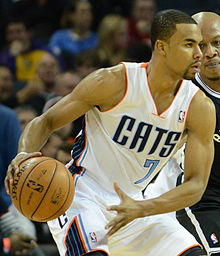 Why he fits: After trading Lin, the Rockets don’t have an offensive anchor to their bench unit. Despite his faults, Lin was quite useful because of his ability to play the role of catalyst when James Harden was off the floor, and his penetration skills were crucial in sparking the ball movement that McHale craves. Perhaps second-year guard Isaiah Canaan and/or rookie Nick Johnson can develop into a scoring point guard of that caliber in time, but it’s certainly not ideal for a title contender to rely on completely unproven talent in their rotation. It would appear that Sessions could be the perfect bridge. Long an analytics darling (PERs of 16.0, 17.7, 16.7 and 19.0 the last four seasons), Sessions is a foul-drawing machine and thrives on penetration opportunities. The Rockets have already reached out to Sessions in recent weeks.
Why he fits: After trading Lin, the Rockets don’t have an offensive anchor to their bench unit. Despite his faults, Lin was quite useful because of his ability to play the role of catalyst when James Harden was off the floor, and his penetration skills were crucial in sparking the ball movement that McHale craves. Perhaps second-year guard Isaiah Canaan and/or rookie Nick Johnson can develop into a scoring point guard of that caliber in time, but it’s certainly not ideal for a title contender to rely on completely unproven talent in their rotation. It would appear that Sessions could be the perfect bridge. Long an analytics darling (PERs of 16.0, 17.7, 16.7 and 19.0 the last four seasons), Sessions is a foul-drawing machine and thrives on penetration opportunities. The Rockets have already reached out to Sessions in recent weeks.
Why he may not: Sessions isn’t a good defensive player, and if the Rockets are sold on either Canaan or Johnson, they may choose to prioritize other positions.
Verdict: It may hinge on whether Sessions will take a cheaper short-term deal for the upside of added exposure from playing on a playoff team. Historically, Sessions has chosen the opposite. He’s played on one playoff team in seven years, and in his last stint as a free agent, turned down better teams for a richer contract on the then-laughably-awful Charlotte Bobcats (now Hornets). Additionally, the lack of buzz around Sessions this summer would seem to indicate he’s stalling in hopes of finding a better offer. Sessions would seem to fit well in Houston, but it will likely come down to whether he’s willing to take the sort of one-year contract that Nelson would not. The answer to that is probably out of Houston’s hands and depends on how the rest of the market values Sessions.
Eric Bledsoe
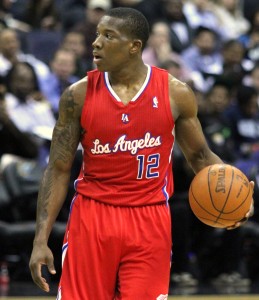 Why he fits: The young combo guard has been described by many as a potential superstar, and his negotiations with the Suns in restricted free agency have turned sour. It’s bad enough now that Bledsoe appears to be threatening to take Phoenix’s qualifying offer, which would allow him to become an unrestricted free agent in the summer of 2015 and leave the Suns for no compensation. The real logic behind such a move would seem to be leverage to get Phoenix to either raise its current offer (4 years, $48 million) or sign-and-trade Bledsoe to a team willing to meet his price tag. While the Rockets don’t have the cap room to meet his demands outright, they could eventually become a viable trading partner. When the non-guaranteed salaries of Alonzo Gee ($3 million) and Scotty Hopson ($1.45 million) become eligible to be traded in larger packages come September, the Rockets could theoretically offer Phoenix a sign-and-trade package focused around young pieces and draft picks and use a combination of non-guaranteed deals to approach a first-year salary figure that Bledsoe may consider (though not the max he’s said to be looking for). And after losing Channing Frye in free agency and adding Isaiah Thomas, the Suns appear to be one man deep in the backcourt and one man short in the front court. A trade to balance that disparity could make some sense.
Why he fits: The young combo guard has been described by many as a potential superstar, and his negotiations with the Suns in restricted free agency have turned sour. It’s bad enough now that Bledsoe appears to be threatening to take Phoenix’s qualifying offer, which would allow him to become an unrestricted free agent in the summer of 2015 and leave the Suns for no compensation. The real logic behind such a move would seem to be leverage to get Phoenix to either raise its current offer (4 years, $48 million) or sign-and-trade Bledsoe to a team willing to meet his price tag. While the Rockets don’t have the cap room to meet his demands outright, they could eventually become a viable trading partner. When the non-guaranteed salaries of Alonzo Gee ($3 million) and Scotty Hopson ($1.45 million) become eligible to be traded in larger packages come September, the Rockets could theoretically offer Phoenix a sign-and-trade package focused around young pieces and draft picks and use a combination of non-guaranteed deals to approach a first-year salary figure that Bledsoe may consider (though not the max he’s said to be looking for). And after losing Channing Frye in free agency and adding Isaiah Thomas, the Suns appear to be one man deep in the backcourt and one man short in the front court. A trade to balance that disparity could make some sense.
Why he may not: Because Bledsoe wants a big contract and would require a sign-and-trade to acquire, it would essentially be a similar “all-in” move to the one the Rockets declined to make with Parsons. Is Morey that sold on him? Bledsoe has had a history of injuries, and while he’s shown flashes of being an elite player, he certainly hasn’t proven it on any sort of consistent basis.
Verdict: Too many ifs. For Bledsoe and the Rockets to have any shot, his situation would have to drag out into September. The Suns would have to be amenable to trading him to a conference rival. Bledsoe wouldn’t be able to get the max deal he craves in Houston, either, even with a combination of non-guaranteed deals. The math isn’t there. The only hope would be that Bledsoe would prefer a shorter-term, non-max deal to establish his value, much like Lance Stephenson opted for in Charlotte over a longer-term deal in Indiana. But even in that scenario, it would compromise much of Houston’s flexibility, so it would depend on whether Morey sees Bledsoe as the type of cornerstone “Big 3” piece that he did not with Parsons. It’s not impossible, but with many questions, it’s unlikely.
Emeka Okafor
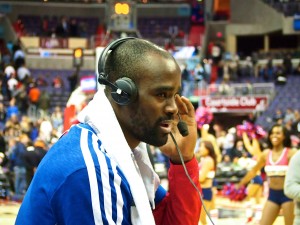 Why he fits: After trading Omer Asik, the Rockets don’t have a proven rim protector behind Howard. At one time, Emeka Okafor was just that. In his most recent season as an NBA player (2012-13 season), Okafor averaged 9.7 points, 8.8 rebounds and 1 block in 26 minutes per game in Phoenix. He missed the entire 2013-14 season with a herniated disc in his neck, but is said to be recovered and is still only 30 years old. Okafor isn’t historically an injury-prone player, having played in at least 67 games in seven of nine seasons. A Houston native, he would likely jump at the opportunity to play for his hometown team.
Why he fits: After trading Omer Asik, the Rockets don’t have a proven rim protector behind Howard. At one time, Emeka Okafor was just that. In his most recent season as an NBA player (2012-13 season), Okafor averaged 9.7 points, 8.8 rebounds and 1 block in 26 minutes per game in Phoenix. He missed the entire 2013-14 season with a herniated disc in his neck, but is said to be recovered and is still only 30 years old. Okafor isn’t historically an injury-prone player, having played in at least 67 games in seven of nine seasons. A Houston native, he would likely jump at the opportunity to play for his hometown team.
Why he may not: Morey has sung the praises of recently-signed Joey Dorsey, who he labelled as one of the best defensive bigs in Europe. The team has also had fairly decent results playing Motiejunas at center, a position he largely played with success during the offseason NBA Summer League. In short, we don’t know if Morey still considers backup center a position of concern.
Verdict: Will someone gamble on Okafor at more than the minimum? If so, the Rockets will probably be out of the race and focus on other positions. But if Okafor’s situation lingers and accepting the minimum becomes a reality, he could become a worthwhile gamble before training camp.
Francisco Garcia
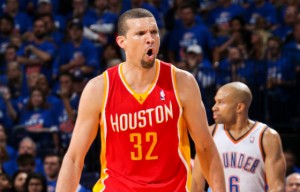 Why he fits: Experience with the system. Garcia has played a part in the last two Houston playoff teams, and at 33, he was the team’s elder statesman. Garcia was in and out of the team’s rotation, depending on if his shot was in rhythm, but he certainly had his moments — especially against Kevin Durant and Oklahoma City, a team that always stands in Houston’s way. At 6-foot-7, he has the versatility on defense to guard multiple positions.
Why he fits: Experience with the system. Garcia has played a part in the last two Houston playoff teams, and at 33, he was the team’s elder statesman. Garcia was in and out of the team’s rotation, depending on if his shot was in rhythm, but he certainly had his moments — especially against Kevin Durant and Oklahoma City, a team that always stands in Houston’s way. At 6-foot-7, he has the versatility on defense to guard multiple positions.
Why he may not: The backup wing situation was bad enough in Houston that McHale turned to Troy Daniels in the playoffs despite getting almost zero experience in the regular season. And that came after the team traded for Jordan Hamilton at the trade deadline and briefly experimented with him in Garcia’s role. In short, the Rockets were clearly not satisfied with Garcia in a prominent rotation role and were actively searching for upgrades.
Verdict: It seems unlikely. Garcia is a liked guy in the Houston locker room, and by all accounts Garcia enjoyed his time in Houston. But even if the pursuits of Allen and Marion fail, there’s still Daniels, who the Rockets clearly hope is ready to take on a larger role this season. I’m sure Garcia would be welcomed back at the league minimum and as one of the team’s final bench players, but it seems more likely that he’d head elsewhere in search of a defined role.
You may like
Houston Rockets
Looking Back on the Trade for Phoenix’s Draft Picks
Are the Rockets set to cash in on Phoenix’s downfall or could a Suns retool murky the waters?
Published
4 months agoon
March 12, 2025
As the Houston Rockets set to host the Phoenix Suns tonight, it seems the right time to take a look back at the trade that linked these two franchises together for the foreseeable future.
This past June, the Rockets made a trade with Brooklyn that sent back to the Nets control of their 2025 and 2026 unprotected first-round picks. In exchange, the Rockets received a large chunk of Phoenix’s future (2025, 2027, 2029) and control of the Dallas Mavericks’ 2029 first.
In essence, the Rockets traded one pick and one swap for two picks and two swaps. All unprotected.
Thoughts At The Time of the Trade
If I’m going to discuss the current outlook of this trade, I have to be honest about how I saw it at the time of the move. While I didn’t hate this trade initially, I definitely didn’t love it either.
I liked that the Rockets increased their overall trade assets. I also liked that they extended the timeline to be able to make a bigger trade and I also appreciated that they kept control of the 2027 Brooklyn swap.
But I didn’t like that the Rockets gave up what seemed like the more established value (Brooklyn) for a more uncertain gamble (Phoenix). The Rockets did not control a “tanking runway” of picks to offer back to Phoenix — all of the picks Houston got in the deal were in staggered years (’25, ’27, ’29). I also felt Brooklyn, who badly needed to rebuild, got away with paying market value to get their picks back despite the fact that the Rockets invested years in watching those picks appreciate up to the point that they had the Nets completely over a barrel.
Net-net: I felt like more certainty was traded for less certainty and it was more of an equitable trade for both teams rather than Brooklyn paying dearly to get back the things only the Rockets could offer.
There were two ways I thought this trade could pay dividends: The Suns needed to flame out immediately, as in this season (unlikely), or the Rockets could trade all those pick assets as part of a deal for a real superstar in the next 12-18 months (more likely).
In a testament to how quickly change can occur in a very unpredictable NBA, four things have happened that have been positive indicators for the Rockets in making this move.
The Suns are fading
While Phoenix had major salary cap issues, dealing with the second apron, they didn’t appear to have problems on the court. They jumped out of the gate 8-1 and looked like a legitimate contender behind their star trio of scorers in Kevin Durant, Devin Booker and Bradley Beal.
Given Houston controlled Phoenix’s pick this year via a swap, it looked like the Rockets would come up empty-handed on the trade this season.
That changed quickly.
Injuries, serious depth concerns and a lack of a defensive identity has sent Phoenix spiraling. Booker’s availability has been inconsistent, forcing Durant to carry the load, while Beal has not quite fit in at all. Their financial limitations, thanks to owner Mat Ishbia’s all-in spending spree, have handcuffed their ability to improve the roster around the three stars.
The Suns are sitting 11th in the West, having gone 22-34 since that hot start, and are currently trying to catch a depleted Dallas squad to get back into the play-in picture.
As of right now, the Rockets project to end up with a lottery pick (albeit a late one) this season out of the trade.
Phoenix was caught shopping Durant
Because the Suns struggled so hard after the start, they tried to make a major move at the deadline but could not unload Beal, in large part due to his no-trade clause.
As a result, they may have made a misstep: They openly tried to trade Durant, which inevitably became public news.
Now? Durant will almost assuredly be traded this summer — likely to a destination that he handpicks. This means the Phoenix Suns will have to look at all possibilities for their future, including potentially having to give Rafael Stone and the Rockets front office a call.
But keep in mind, the Rockets can not offer Phoenix the ability to completely rebuild via the draft right now. Phoenix’s 2026 pick is controlled by Washington. They would have to get extremely creative to set that stage. A retool in Phoenix is much more likely.
Could Brooklyn have been better than expected?
This one is tougher to gauge.
The Brooklyn Nets are currently tied for fifth-worst team in the league, giving them strong lottery odds this summer. This was expected. After all, the Nets, even with a healthy Mikal Bridges and a full roster, were not a good team last season, closing the year 20-41 in the final three quarters of the season. The Rockets ended up with the #3 pick (Reed Sheppard) as a result of Brooklyn’s mediocrity.
However, if the Rockets had not placed that pick back in Brooklyn’s hands, would the Nets be better than this?
Brooklyn brought in a new coach in Jordi Fernandez that has had a positive impact. They have dumped off players, such as Dennis Schroeder and Dorian Finney-Smith, that impacted winning. The bar to make the play-in in the East (.415 winning percentage) is obscenely low, with Brooklyn being just five wins away from it at the moment.
And on top of that, Brooklyn did have lots of draft capital that they could have moved to try to win now.
It’s very tough to say as you don’t know if a team with Bridges still in Brooklyn might have actually been worse than this current squad, but you could make a case that the pick the Rockets would have ended up with from Brooklyn this season would be eerily similar to the one they will end up getting from Phoenix this year.
Again, this is a tough call.
Nico Harrison Hooked the Rockets Up
As part of the trade, the Rockets got control of the Dallas Mavericks’ 2029 first-round pick (unprotected, of course). While there’s really no way of knowing what a pick will be five years out, we did know that Luka Doncic would be just 29-30 years old that season and it was fairly etched in stone that he would be the core piece of a Dallas squad that season.
Enter chaos in Dallas.
Doncic was shipped out in the trade that shocked the world, which could have a major impact on the Rockets. Dallas’ current core of Kyrie Irving and Anthony Davis will be 37 and 36 years old that season, respectively.
On paper, the value of that pick shot up.
Final Summary
Right now, the outlook on these picks looks strong. One source stated off the record that they feel the 2029 Phoenix pick is the best pick asset out there that is owned by another team. The Rockets would be reluctant to add that one specifically into any trade unless it’s for a truly legitimate star.
But if there is any lesson that the NBA teaches us over and over again, it’s that it’s very hard to predict where a team will be a year from now, much less three years from now.
Can the Rockets pressure Phoenix and leverage the ownership they have of their draft capital to get what they really want (Booker) from them? Could a Suns retool around Booker and Beal, with the right pieces and assets acquired from a Durant trade, significantly change their on-court outlook and cap sheet — which in turn could damage the value of the picks Houston controls?
Bottom line is it has worked out well this season, and the future forecast at the moment is promising. The current value of those future picks appears strong. What will likely determine history’s final grade for this trade will be how it sets them up for the trade to come, and that’s where fans will be looking to Stone and the front office for action starting this summer.
Houston Rockets
Amen Thompson’s ankle injury will be re-evaluated in one week
“The things he does you can’t replicate,” says Rockets coach Ime Udoka
Published
4 months agoon
March 10, 2025
Rockets young star Amen Thompson will have his ankle injury re-evaluated in one week, according to Ime Udoka.
Thompson had an MRI on Sunday and the Rockets coach confirmed all imaging (X-ray, MRI) was negative.
“Just some swelling and pain, obviously,” said Udoka.
If you listen to Udoka, you can tell he knows how special Amen is to this team. He said the Rockets are missing a lot by not having him out there.
“Obviously, the things he does you can’t replicate,” said Udoka. “[Amen is] a guy that plays every position for us. When one goes down, he runs the point. If another is out, he runs the four.”
Amen is one of the best defensive players in the game, and as a one-on-one defender of guards/wings, he might already be the best in the league in just his second season. He’s holding his opponents to 40.5% shooting from the field, tops in the league.
“He’s a very unique defensive player,” said Udoka. “We got some guys that do some great things there, but I like to put him and Dillon on the best two usually, night to night. You got Tari and that’s a luxury as well, but the way he goes about it is different. His athleticism, size, speed, strength, shotblocking ability, steals… he’s all over the place.”
“Hard to replicate for sure.”
Amen injured his ankle late Saturday night in a blowout win against the Pelicans, but the unfortunate part was he probably should not have been on the floor in the first place.
The Rockets left Amen Thompson in the game in a blowout to get one more rebound for a triple-double and he just got injured. He's heading to the locker room with a limp. https://t.co/UBtrEpgWuU pic.twitter.com/D8GeKP8sQk
— ClutchFans (@clutchfans) March 9, 2025
The Rockets had built well over a 30-point lead by early fourth quarter. Jalen Green was able to rest the entire fourth. Alperen Sengun came out of the game with 7-8 minutes left while Dillon Brooks and Tari Eason came out with 6:00 left. But Thompson, who had posted an insane +39 on-off number, remained in the game because he was one rebound shy of a triple-double with 15 points, 11 assists and nine rebounds.
Udoka addressed that decision on Monday before the game against Orlando.
“What I typically don’t do is wholesale substitutions,” said Udoka of the decision to keep Amen in the game. “Albeit 30[-point lead] at six minutes [left] is different than losing to Minnesota, a 16-point lead with four minutes [left].”
“I’ve seen it go both ways in the past. You take out guys too early and have to bring starters back, and vice versa.”
Thompson has played in 60 games this season, five short of being eligible for postseason awards. He absolutely should be up for an All-Defensive nod this season so keep an eye on him getting back in time for that. He would need to return to action no later than April 4th for the game against the OKC Thunder in order to play enough games to be eligible.
Houston Rockets
How the Kyrie Irving Injury Impacts Rockets
Houston’s draft positioning and offseason plans could be impacted by Dallas
Published
4 months agoon
March 4, 2025
Dallas Mavericks guard Kyrie Irving was injured Monday night and the news dropped on Tuesday that the knee injury is serious — a torn ACL in his left knee that will end his season and a good portion of next season as well.
Brutal. I can’t think of an NBA team that imploded faster than the Dallas Mavericks.
You trade away a 25-year-old phenom who just hoisted you on his back en route to the NBA Finals a year ago. You cashed in that golden ticket to go all-in on a trio of aging stars in Kyrie, Anthony Davis, and Klay Thompson.
Bold strategy, Nico. Let’s see if it pays off.
(Narrator: It’s not paying off.)
The Mavericks had some interesting potential this year and maybe the next couple of years once everyone was healthy, but now? Their star guard is likely out until the calendar year 2026 and Klay and AD aren’t getting any younger nor more durable. The Mavericks may have actually swapped their future for a present that never arrives — and Dallas GM Nico Harrison has to be feeling overwhelming pressure right now.
So how does this impact the Rockets?
For starters, Houston has a game remaining on the schedule against Dallas on March 14th at Toyota Center — Davis may or may not be back for that game.
More importantly, Dallas is the 10th seed in the West at the moment, just 3.5 games ahead of the Phoenix Suns (11th seed). The Rockets control Phoenix’s first-round pick unprotected this season via a swap. We need as many West teams as possible ahead of Phoenix to keep them out of the play-in/playoffs and to push them as deep into the lotto as possible.
This complicates that. Phoenix’s remaining schedule is the toughest in the NBA by a good margin, with plenty of games left against the league’s best teams, so it still looks promising overall — but we’re talking about Kevin Durant, Devin Booker and Bradley Beal. They can still get hot at the right time while Dallas may struggle.
So keep a close eye on that. The good news is the Portland Trail Blazers are one of the hottest teams in the league and they are (shockingly) nipping at the Arizona squad’s heels.
Taking a look ahead to the offseason, the Kevin Durant Pursuit will be big.
This one is a little more complicated for Houston. The Rockets really want Devin Booker but, as of now, the Phoenix plan appears to be to trade KD this offseason and retool around Booker. The Rockets will have interest in Durant but they’re not going to sell the farm (prospects and all the picks) for a 37-year old like they would for Booker.
Three teams that I’ve heard a lot about from Rockets circles that will be in the mix are Houston, Minnesota and Dallas — Timberwolves and Mavericks have been considered the main competition. But, a lot of this will depend on Durant himself and where he wants to play at this stage of his career.
Keep in mind also, if the Suns are “retooling” around Booker and Beal (holding the no-trade clause), then they could be placing a higher priority on win-now players over the return of their own draft assets. The Rockets definitely have the best assets overall to offer up in any trade package between those three teams, but if Phoenix does prefer finding the right ready-to-win players around Booker/Beal, that gives Dallas and Minnesota a real chance.
This injury “may” take Dallas out of the equation, and they are/were definitely a contender for KD’s services given his past relationship with Kyrie and the way Dallas was positioned to win right now. Does KD at his age want to wait for Kyrie to be healthy?
And one last friendly reminder: The Rockets control that Dallas 2029 first (unprotected).
Houston Rockets
Rockets Sign David Roddy to Two-Way Contract
Former first-round pick has played with the Grizzlies, Suns and Hawks
Published
4 months agoon
March 3, 2025
The Rockets made a move on Monday, signing former first-round pick David Roddy to a two-way contract.
The two-way spot opened up after the front office signed Jeenathan Williams to a standard four-year, $8.2 million contract (with friendly team options all along the way).
Roddy is 6-foot-5 and 250+ pounds but sports a 6-foot-11 wingspan. He was taken with the 23rd pick in the first round of the 2022 NBA Draft — six selections after the Rockets drafted Tari Eason. A standout in college, Roddy averaged 19.2 points, 7.5 rebounds, 2.9 assists, 1.2 steals, and 1.1 blocks per game during his junior season at Colorado State.
Roddy, who turns 24 later this month, is a physical player who can play multiple positions. He’s a solid rebounder for his size/position. He has played in 165 games over three seasons with the Grizzlies, Suns, Hawks and most recently Sixers, averaging 6.2 points and 2.9 rebounds per game.
The guard/forward has not shown efficient shooting, however — he’s a career 30.5% three-point shooter and just 68.4% from the line. His defense is better inside than out.
Ultimately, it will be those two things — three-point shooting and defense — that will determine his chances of carving out a consistent role in the league.
All in all, it’s a low-risk signing and the Rockets get a look at a prospect that fits their age timeline.
Houston Rockets
Houston a potential landing spot for Ben Simmons post-buyout?
Published
5 months agoon
February 6, 2025
ESPN NBA analyst Brian Windhorst said on Thursday’s NBA Trade Deadline show that Brooklyn Nets forward Ben Simmons is working on a buyout and the Houston Rockets is a potential landing spot for him.
“Cleveland and Houston are two situations for Ben Simmons,” said Windhorst.
Brian Windhorst says the Cavaliers and Rockets are buyout locations for Ben Simmons.
Thoughts? pic.twitter.com/7ly4mvmxr5
— ClutchFans (@clutchfans) February 6, 2025
Advertisement
Rockets coach Ime Udoka was an assistant coach in Philadelphia in 2019-20 when Simmons was with the Sixers, before injuries took a significant toll. In fact, Udoka, when speaking about Amen Thompson earlier this season, brought up some comparisons to Simmons.
“The skill set is there, and it’s something that’s unique with his speed, athleticism, size, passing ability, and all those things,” said Udoka of Thompson. “I coached somebody, Ben Simmons, who had similar traits… as far as size and ability to push the pace, and find guys and finish. There are some similarities there.”
Both Thompson and Simmons are known for their elite athleticism, defensive versatility, and ability to create opportunities in transition.
However, can Simmons help the Rockets today? That’s the tough question.
Simmons has played in 33 games this season, averaging 6.2 points, 6.9 assists, 5.2 rebounds, 0.8 steals and 0.5 blocks in 25 minutes a night. He does not shoot threes (like, at all) — he has only attempted two threes in the past three seasons combined.
Ideally, he does not play in front of your young forwards of Amen, Tari Eason and Jabari Smith Jr. and on that basis alone, I think I would pass. But, Ime loves defensive dogs and he could use some extra ballhandling on the roster. You can see that there’s little in the way of offensive organization when Fred VanVleet is out.
There would be a comical full circle moment though if the Rockets did sign Ben Simmons, considering the Rockets were heavily criticized for trading James Harden in 2021 to Brooklyn instead of to Philadelphia for Simmons. The Rockets clearly made the right choice there.

